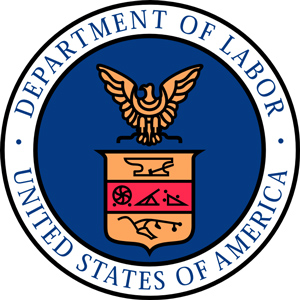June 17, 2019 - WASHINGTON, DC – Last week, the U.S. Departments of Health and Human Services, Labor, and the Treasury issued a new policy that will provide hundreds of  thousands of employers, including small businesses, a better way to provide health insurance coverage, and millions of American workers more options for health insurance coverage. The Departments issued a final regulation that will expand the use of health reimbursement arrangements (HRAs). When employers have fully adjusted to the rule, it is estimated this expansion of HRAs will benefit approximately 800,000 employers, including small businesses, and more than 11 million employees and family members, including an estimated 800,000 Americans who were previously uninsured.
thousands of employers, including small businesses, a better way to provide health insurance coverage, and millions of American workers more options for health insurance coverage. The Departments issued a final regulation that will expand the use of health reimbursement arrangements (HRAs). When employers have fully adjusted to the rule, it is estimated this expansion of HRAs will benefit approximately 800,000 employers, including small businesses, and more than 11 million employees and family members, including an estimated 800,000 Americans who were previously uninsured.
“Too many Americans today have little say in how their healthcare is financed,” said HHS Secretary Alex Azar. “President Trump has promised Americans that he will put them in control of their healthcare, and this expansion of health reimbursement arrangements will help deliver on that promise by providing Americans with more options that better meet their needs. This rule and other Administration efforts are projected to provide almost 2 million more Americans with health insurance.”
“By continuing to offer diverse health coverage choices, the Trump Administration ensures America has a healthy workforce,” said Labor Secretary Alexander Acosta. “The HRA final rule offers millions of American workers more health coverage choices and portability. HRAs create a great opportunity for job creators to support their employees and for those employees to be empowered to make the best healthcare decisions for their families.”
“President Trump is delivering on his promise to offer Americans more health coverage choices and lower healthcare costs. This new rule gives businesses a better way to offer health insurance to employees and allows workers to select coverage that best fits their and their families’ needs,” said Treasury Secretary Steven T. Mnuchin. “I am proud of this Administration’s efforts to curb the cost of healthcare for American workers and small businesses by expanding coverage options and spurring competition.”
Under the rule, starting in January 2020, employers will be able to use what are referred to as individual coverage HRAs to provide their workers with tax-preferred funds to pay for the cost of health insurance coverage that workers purchase in the individual market, subject to certain conditions. These conditions strike the right balance between employer flexibility and guardrails meant to protect the individual market against adverse selection, and include a notice requirement to ensure employees understand the benefit. Individual coverage HRAs are designed to give working Americans and their families greater control over their healthcare by providing an additional way for employers to finance health insurance.
This regulation is in response to President Donald J. Trump’s Executive Order on “Promoting Healthcare Choice and Competition Across the United States,” and is part of the Trump Administration’s work to deliver more health coverage choices and lower healthcare costs for Americans. Full implementation of the HRA rule, the Association Health Plan rule, and the short-term, limited-duration insurance rule is projected to provide insurance to nearly 2 million people, on net, who would otherwise be uninsured.
Many businesses have struggled with the high costs and complex bureaucracy of providing health insurance coverage, leading to less coverage for workers. Over the last decade, a significant number of small businesses have stopped offering any health insurance to their employees. As a result, a smaller percentage of Americans working in small businesses are being covered by employer health benefits, and many are left uninsured. Moreover, 80 percent of employers that provide coverage only offer one type of health plan to their employees, leaving workers and their families with no choices and plans that may not meet their needs.
The HRA rule makes it easier for small businesses to compete with larger businesses by creating another option for financing worker health insurance coverage. The rule enables businesses to better focus on serving their customers and growing their businesses—and not on navigating and managing complex health benefit designs.
The HRA rule also increases workers’ choice of coverage, increases the portability of coverage, and will generally improve worker economic well-being. This rule will also allow workers to shop for plans in the individual market and select coverage that best meets their needs. Because HRAs are tax-preferred, workers who buy an individual market plan with an HRA receive the same tax advantages as workers with traditional employer-sponsored coverage. Further, by increasing employee options and empowering more people to shop for health plans in the individual market, the final rule should spur a more competitive individual market that drives health insurers to deliver better coverage options to consumers.
In addition to allowing individual coverage HRAs, the HRA rule creates an excepted benefit HRA. In general, this aspect of the rule permits employers that offer traditional group health plans to provide an excepted benefit HRA of up to $1,800 per year (indexed to inflation after 2020), even if the employee doesn’t enroll in the traditional group health plan, and to reimburse an employee for certain qualified medical expenses, including premiums for vision, dental, and short-term, limited-duration insurance. This provision will also benefit employees who have been opting out of their employer’s traditional group health plan because the employee share of premiums is too expensive.
The final rule can be found here, and FAQs can be found here.
Source: DOL








